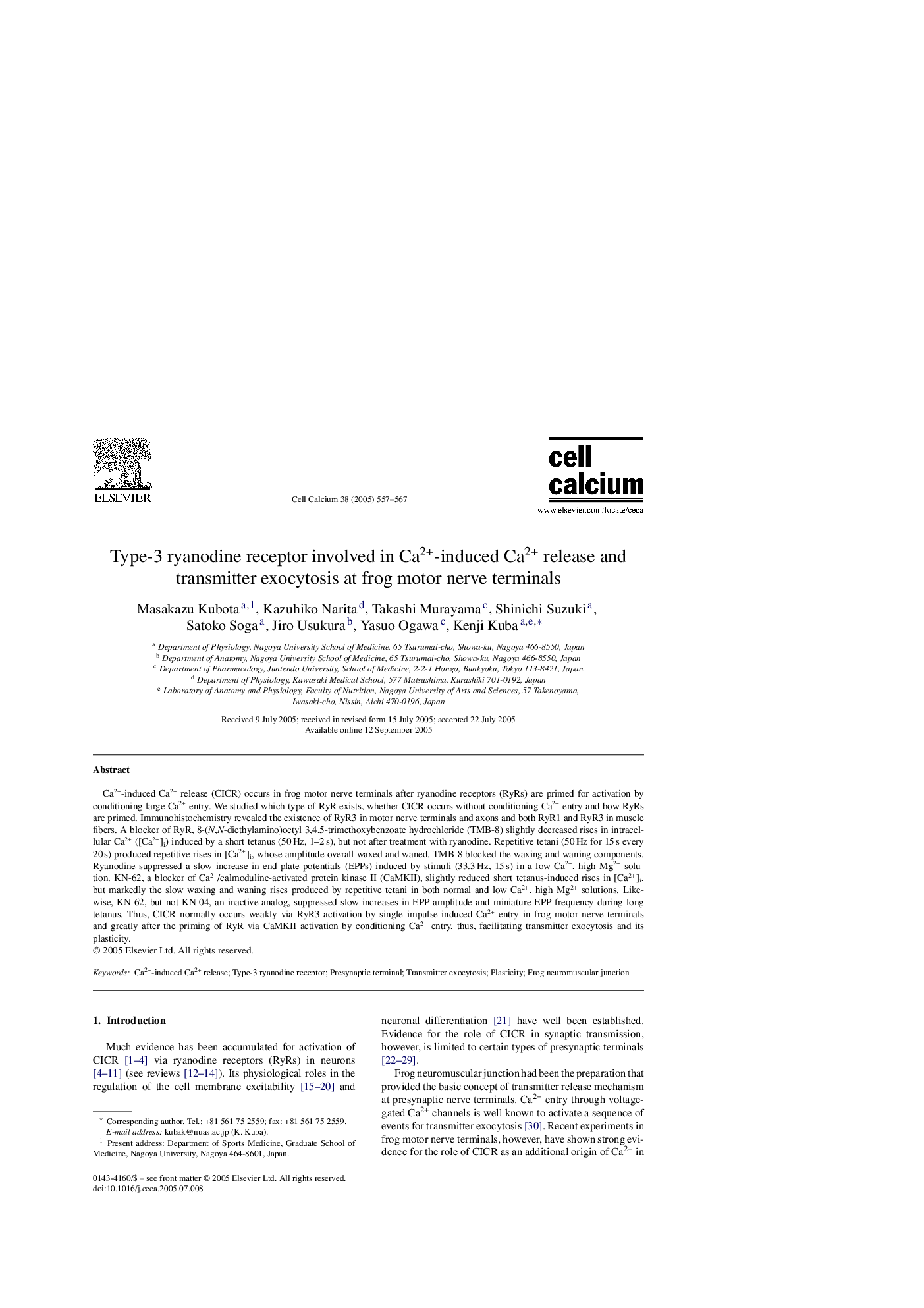| کد مقاله | کد نشریه | سال انتشار | مقاله انگلیسی | نسخه تمام متن |
|---|---|---|---|---|
| 10926515 | 1091883 | 2005 | 11 صفحه PDF | دانلود رایگان |
عنوان انگلیسی مقاله ISI
Type-3 ryanodine receptor involved in Ca2+-induced Ca2+ release and transmitter exocytosis at frog motor nerve terminals
دانلود مقاله + سفارش ترجمه
دانلود مقاله ISI انگلیسی
رایگان برای ایرانیان
کلمات کلیدی
موضوعات مرتبط
علوم زیستی و بیوفناوری
بیوشیمی، ژنتیک و زیست شناسی مولکولی
بیولوژی سلول
پیش نمایش صفحه اول مقاله

چکیده انگلیسی
Ca2+-induced Ca2+ release (CICR) occurs in frog motor nerve terminals after ryanodine receptors (RyRs) are primed for activation by conditioning large Ca2+ entry. We studied which type of RyR exists, whether CICR occurs without conditioning Ca2+ entry and how RyRs are primed. Immunohistochemistry revealed the existence of RyR3 in motor nerve terminals and axons and both RyR1 and RyR3 in muscle fibers. A blocker of RyR, 8-(N,N-diethylamino)octyl 3,4,5-trimethoxybenzoate hydrochloride (TMB-8) slightly decreased rises in intracellular Ca2+ ([Ca2+]i) induced by a short tetanus (50Â Hz, 1-2Â s), but not after treatment with ryanodine. Repetitive tetani (50Â Hz for 15Â s every 20Â s) produced repetitive rises in [Ca2+]i, whose amplitude overall waxed and waned. TMB-8 blocked the waxing and waning components. Ryanodine suppressed a slow increase in end-plate potentials (EPPs) induced by stimuli (33.3Â Hz, 15Â s) in a low Ca2+, high Mg2+ solution. KN-62, a blocker of Ca2+/calmoduline-activated protein kinase II (CaMKII), slightly reduced short tetanus-induced rises in [Ca2+]i, but markedly the slow waxing and waning rises produced by repetitive tetani in both normal and low Ca2+, high Mg2+ solutions. Likewise, KN-62, but not KN-04, an inactive analog, suppressed slow increases in EPP amplitude and miniature EPP frequency during long tetanus. Thus, CICR normally occurs weakly via RyR3 activation by single impulse-induced Ca2+ entry in frog motor nerve terminals and greatly after the priming of RyR via CaMKII activation by conditioning Ca2+ entry, thus, facilitating transmitter exocytosis and its plasticity.
ناشر
Database: Elsevier - ScienceDirect (ساینس دایرکت)
Journal: Cell Calcium - Volume 38, Issue 6, December 2005, Pages 557-567
Journal: Cell Calcium - Volume 38, Issue 6, December 2005, Pages 557-567
نویسندگان
Masakazu Kubota, Kazuhiko Narita, Takashi Murayama, Shinichi Suzuki, Satoko Soga, Jiro Usukura, Yasuo Ogawa, Kenji Kuba,